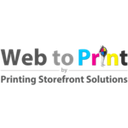In what way Web 2 Print Solutions Boost Client Experience

In the current rapidly evolving digital landscape, companies are continually looking for ways to improve customer satisfaction while simplifying their operations. Web-to-Print solutions has risen as a transformative solution in the print industry, offering a myriad of benefits that benefit both print shops and their customers. By empowering users to tailor and order printed products online, these technologies not only streamline the ordering process but also give customers with increased control over their purchases.
As we delve into the world of Web-to-Print solutions, we will explore how these cutting-edge tools are revolutionizing the printing landscape. From improving order management and workflow efficiency to allowing personalized printing experiences, Web-to-Print software is at the forefront of improving the overall customer experience. Whether you're a print shop owner seeking to amplify online sales or a business aiming to offer personalized products, comprehending the advantages of Web-to-Print technology is vital for staying relevant in the current market.
Grasping Web-to-Print Systems
Web-to-print solutions refer to a collection of technologies that enable businesses and consumers to design, modify, and request printed items online. look at this website printing process by facilitating users to transfer designs, select print requirements, and submit orders through a web interface. With the expanding reliance on digital platforms, web-to-print has become essential for print shops seeking to improve their services and cater to an increasingly tech-savvy clientele.
At the core of web-to-print solutions is the merging of e-commerce functionalities with printing services. This fusion empowers customers to engage in customized printing experiences without the necessity for direct communication with sales representatives. By leveraging standardized templates and sophisticated design tools, users can develop distinct products tailored to their specific needs, all while enjoying the convenience of online access and order tracking.
As the print industry transforms, web-to-print services have become more complex, incorporating features such as variable data printing and systematized workflows. These innovations ease the management of print orders, reduce turnaround times, and decrease errors. Furthermore, the scalability of web-to-print solutions ensures that businesses can grow and adapt to shifting market demands while maintaining a high level of customer satisfaction.
Advantages of Web-to-Print for Businesses
Web-to-print services offer a variety of advantages that can significantly enhance the operational efficiency of businesses. One of the main benefits is the simplification of the order system. With an integrated online platform, customers can quickly customize and place their print orders straight through a web platform, which reduces the chances of human error commonly associated with conventional order taking. This streamlining translates into faster response times and improved stock management, allowing businesses to more effectively meet customer demands and expectations.
Another significant advantage is the ability to provide customized experiences to clients. Web-to-print software enables companies to offer customized products tailored to individual preferences. This capability not only increases customer satisfaction but also encourages repeat transactions, as customers appreciate the ability to create distinct items such as custom branding or customized gifts. As consumers continue to seek personalized services, businesses leveraging web-to-print solutions position themselves advantageously in the market.
Lastly, web-to-print services contribute to reducing costs and growth potential for companies. By automating multiple tasks—from order management to inventory tracking—companies can reduce operational costs and distribute resources more effectively. Additionally, the scalability of web-to-print technology allows companies to expand their services without large overhead; this scalability fosters growth opportunities in multiple segments of the printing sector. As a result, adopting web-to-print technology not only enhances efficiency but also aids long-term business development strategies.
A Prospects of Web-to-Print Technology

As we gaze forward, the future of web-to-print technology seems bright, energized by emerging developments and trends that promise to further enhance the customer experience. The merging of AI and ML is set to revolutionize how print services work, facilitating more personalized and effective product offerings. Companies will be able to predict customer preferences and accelerate workflows, guaranteeing that bespoke orders are not only easy to place but also rapidly fulfilled. This change will enhance customers to connect more closely with print brands as they receive personalized offerings that meet their individual needs.
Sustainability is also becoming a key focus in the print industry, and online printing services will play a important role in promoting sustainable practices. Future technologies will allow print shops to fine-tune their materials and processes, minimizing waste and lessening environmental impacts. Businesses will increasingly adopt cloud-based solutions that enable remote operations and cut down on the need for physical resources. This shift not only improves operational efficiency but also aligns with a increasing customer expectation for ethical business practices.
In conclusion, the trend toward mass customization will continue to gain traction, with online printing solutions at its heart. Customers will request more choices for customization, from custom branding to distinct templates specifically designed to their preferences. With advancements in variable data printing and automation, print providers will easily fulfill these demands, opening up new revenue streams and enhancing customer loyalty. As these technologies progress, print shops that respond to these changes will find themselves well-positioned to thrive in an increasingly competitive marketplace.
